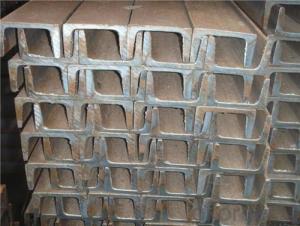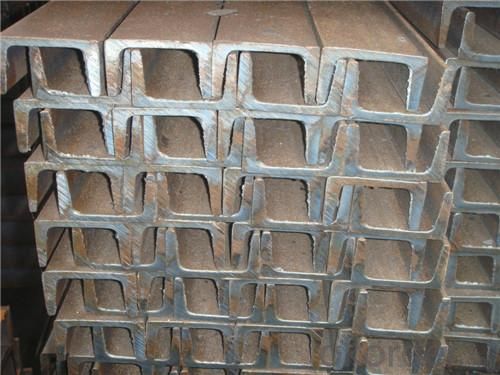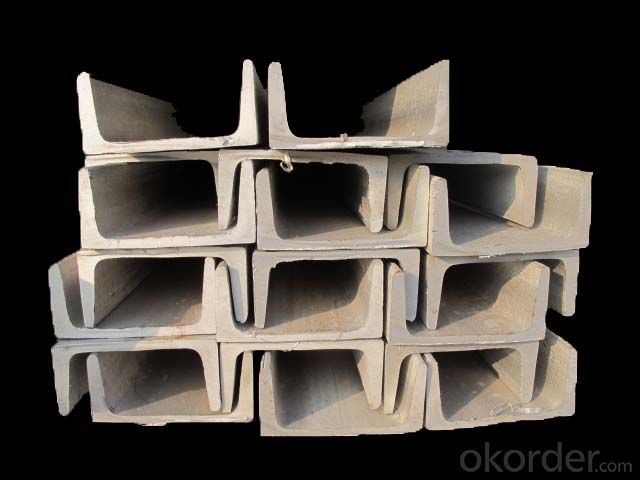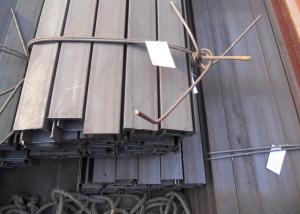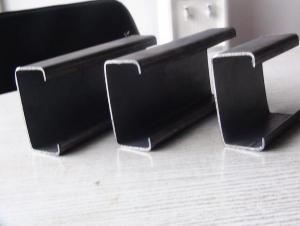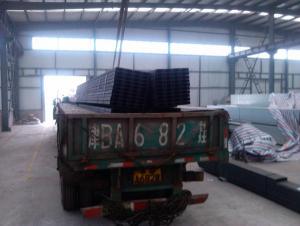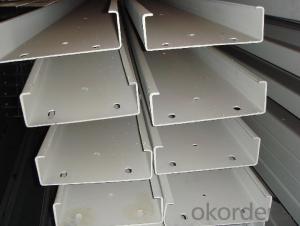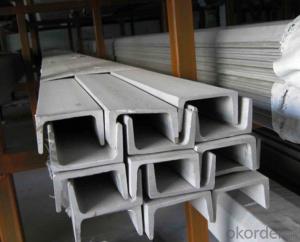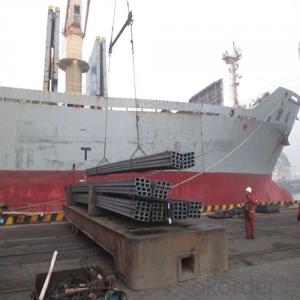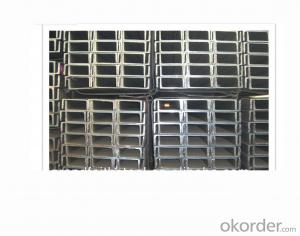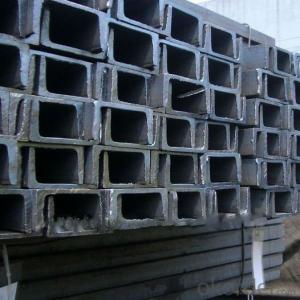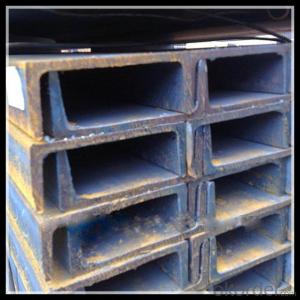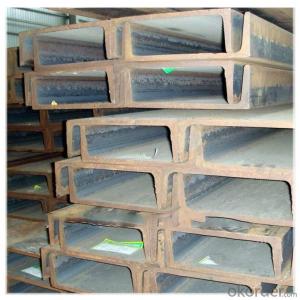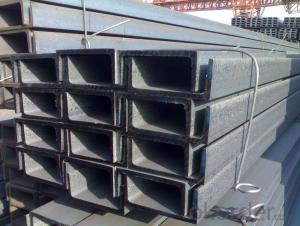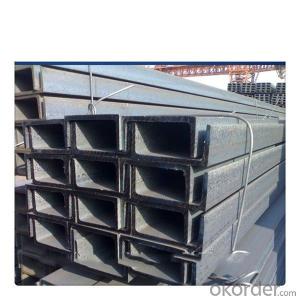Height 85mm the Thickness 8mm Surface and Length: according to the requirements of Channel Steel
- Loading Port:
- Qingdao
- Payment Terms:
- TT OR LC
- Min Order Qty:
- 15 m.t.
- Supply Capability:
- 50000 m.t./month
OKorder Service Pledge
OKorder Financial Service
You Might Also Like
1、the details information of our Channel Steel
1)the ordinary model
Height: | 60-400mm |
Thickness: | 9-14.5mm |
Surface: | according to the customers’ requirements |
Length: | As customers’ requirements |
Size: | 90*37*4.5mm--400*104*14.5 mm . |
Punch: | Can be punched as customer's drawing |
Material: | Q195/Q235/ Q215/Q345/SS400/S235JR, A36,SS400,SS540 ASTM A36 and so on |
2)the light model
Height: | 60-400mm |
Thickness: | 6.4-8.0mm |
Surface: | Painted or Galvanized;according to the customers’ requirements |
Length: | As customers’ requirements |
Size: | 50*32*4.4mm--400*115*8.0mm . |
Punch: | Can be punched as customer's drawing |
Material: | Q195/Q235/ Q215/Q345/SS400/S235JR, A36,SS400,SS540 ASTM A36 and so on |
2、the Product Advantage
1) We can design the channel steel according to customers’requirements
2) We can manufacture under complete quality control system---ISO9001&SGS
3) We can installed with instruction of experienced engineers
4) Easy to assemble and dismantle
5) Eco-friendly material: can be used for several times and can be recycled
6) Shorter construction period, longer using time
7) High strength and stiffness, high weight bearing
3、why choose us ?Product Advantage
1)The channel steel quality is prime quality
2)Our price is competitive price with our competitor
3)We provide the professional service
4)Prompt delivery & Seaworthy packing
5)Mill Test Certificate
4、why choose us ?
Company Information
which is one of the largest manufacturing bases of Steel Channel in northern China. We are a company that is specialized in producing Stainless Steel Channel、Prime Stainless Steel Channels and so on.
With years of development, our company won the trust and excellent reputation of customers for the quality of our products and sincere service, as well as foreign users of the community.
Please contact me if you are interested in our products and I will try my best to offer you the best goods and service.
- Q: How to judge whether the joint of steel structure is rigid or hinged, as shown below, the steel beam and steel column are all channel steel and welded through weld joint.
- I don't think we can generalize. The connection of the steel structure is mainly welding seam connection and bolt connection; generally speaking, the welding seam is just connected, but the bolt is not necessarily. The bolt section, there are friction; if the friction force of the bolt section is far greater than the moment, so it can be identified as rigid; if the two force magnitude close, then identified as articulated, and to check the moment.
- Q: How do steel channels contribute to the overall stability of a structure?
- Steel channels contribute to the overall stability of a structure by providing structural support and reinforcement. They are often used as beams or columns, distributing the load and transferring it to the foundation or other supporting elements. Their shape and material properties enhance their strength and stiffness, allowing them to withstand bending, torsion, and other forces that can cause structural instability. Additionally, steel channels can be strategically placed to resist lateral movements and vibrations, ensuring the stability and integrity of the entire structure.
- Q: How do steel channels contribute to the overall daylighting of a building?
- Steel channels do not directly contribute to the overall daylighting of a building. Daylighting refers to the process of utilizing natural light to illuminate the interior spaces of a building. It involves the strategic placement of windows, skylights, and other transparent materials to allow natural light to enter the building. Steel channels, on the other hand, are structural components typically used in construction to provide support and stability to various building elements. They are often used in framing systems, such as for walls, floors, and roofs, to provide strength and rigidity. While steel channels themselves do not contribute to daylighting, they can indirectly impact the overall daylighting of a building. For example, steel channels may be used in the construction of window frames, which can help to support and secure the windows in place. Properly designed and installed window frames can ensure that windows are positioned correctly to allow maximum natural light to enter the building. Additionally, steel channels can be used in the construction of skylights, which are specifically designed to bring natural light into a building from above. Skylights can be made with steel channel frames to provide structural support and stability, enabling the skylights to be installed securely in the roof or ceiling. In summary, while steel channels themselves do not directly contribute to the overall daylighting of a building, they can play a role in supporting and securing windows and skylights, which are important elements in the daylighting strategy of a building.
- Q: How do steel channels perform under wind loads?
- Steel channels perform well under wind loads due to their high strength and rigidity. They are able to withstand the forces created by wind without significant deformation or failure. The structural design of steel channels, along with their ability to distribute and transfer loads, makes them an ideal choice for resisting wind loads in various applications such as building frames, bridges, and infrastructure projects.
- Q: What does "14 channel steel" do in the template "[14"?
- Specification for dimensions and weight of hot rolled ordinary channel steel14#a height (H) 140, leg width (b) 58, waist thickness (d) 6, theoretical weight 14.535 kg14#b height (H) 140, leg width (b) 60, waist thickness (d) 8, theoretical weight 16.733 kg
- Q: Q235's steel plate and channel steel were rusted in the rain. The corrosion is not too serious, but it looks obvious. Will this product be rejected? Is there a standard in this respect?Please answer professionals, thank you.
- Normally, they are not rejected unless the customer has made it clear that they want to prevent the rain.
- Q: What are the different methods for protecting steel channels from corrosion?
- There are several methods available for protecting steel channels from corrosion. Here are a few of the most common ones: 1. Coating: One of the most effective methods is to apply a protective coating on the surface of the steel channels. This can be done using paints, epoxy coatings, or galvanizing. Coatings act as a barrier between the steel and the corrosive elements in the environment, preventing direct contact and corrosion. 2. Cathodic protection: This method involves using a sacrificial metal or an impressed current to protect the steel channels. Sacrificial metal, such as zinc or magnesium, is connected to the channels. These metals are more reactive than steel and corrode in place of the channels. Impressed current systems involve the use of an external power source to generate an electric current that counteracts the corrosion process. 3. Corrosion inhibitors: These are chemicals that can be applied to the steel channels to slow down or prevent corrosion. Corrosion inhibitors work by forming a protective layer on the surface of the channels, which inhibits the reaction between the steel and the corrosive elements. 4. Design considerations: Proper design and construction practices can also help protect steel channels from corrosion. This includes ensuring proper drainage and ventilation to reduce moisture buildup, avoiding crevices and areas where water can accumulate, and using materials that are less susceptible to corrosion in corrosive environments. 5. Regular maintenance: Regular inspections and maintenance, such as cleaning and removing any accumulated debris or dirt, can help identify and address potential corrosion issues early on. This can include reapplying coatings, repairing damaged areas, or replacing corroded sections of the steel channels. It is important to note that the choice of protection method depends on factors such as the environment, the expected service life of the channels, and the budgetary constraints. Consulting with corrosion experts or professionals in the field can help determine the most suitable method for protecting steel channels from corrosion in a specific application.
- Q: Are steel channels suitable for load-bearing applications?
- Yes, steel channels are suitable for load-bearing applications. Steel channels are designed to provide structural support and are commonly used in construction and engineering projects. They offer high strength and durability, making them ideal for withstanding heavy loads and distributing weight effectively. Steel channels can be used in various load-bearing applications such as beams, columns, frames, and supports. Additionally, they are versatile and can be easily customized to meet specific load requirements. Overall, steel channels are a reliable and popular choice for load-bearing applications due to their strength, durability, and versatility.
- Q: What are the different finishes available for steel channels?
- There are several different finishes available for steel channels, each serving a specific purpose and offering unique benefits. Some of the most common finishes include: 1. Hot-dip galvanized: This finish involves immersing the steel channel in a molten zinc bath, creating a thick, durable coating that provides excellent corrosion resistance. Hot-dip galvanized channels are often used in outdoor environments or in applications where the steel is exposed to moisture or harsh conditions. 2. Powder coating: Powder coating involves applying a dry powder to the steel channel and then baking it in an oven to create a hard, protective layer. This finish is available in a wide range of colors and offers good corrosion resistance, impact resistance, and durability. Powder-coated steel channels are commonly used in architectural applications or where aesthetics are important. 3. Electroplating: Electroplating involves depositing a thin layer of metal, such as zinc or chrome, onto the steel channel through an electrochemical process. This finish provides corrosion resistance and can enhance the appearance of the channel. Electroplated steel channels are often used in decorative or automotive applications. 4. Painted: Steel channels can also be painted with various types of coatings, such as epoxy, acrylic, or enamel paint. Painting provides a protective barrier against corrosion and can also improve the appearance of the channel. Painted steel channels are commonly used in indoor applications or where specific colors are required. 5. Stainless steel: Stainless steel channels have a natural, corrosion-resistant finish due to the high levels of chromium present in the alloy. This finish is ideal for applications where the channel will be exposed to high levels of moisture or chemicals. These are just a few examples of the different finishes available for steel channels. The choice of finish depends on factors such as the intended use, environmental conditions, and desired appearance of the channel.
- Q: How are steel channels used in the construction of bridges?
- Steel channels are commonly used in the construction of bridges to provide structural support and stability. They are often used as beams or columns to distribute weight and withstand heavy loads. Steel channels are versatile and can be easily fabricated to meet specific design requirements, making them ideal for bridge construction.
Send your message to us
Height 85mm the Thickness 8mm Surface and Length: according to the requirements of Channel Steel
- Loading Port:
- Qingdao
- Payment Terms:
- TT OR LC
- Min Order Qty:
- 15 m.t.
- Supply Capability:
- 50000 m.t./month
OKorder Service Pledge
OKorder Financial Service
Similar products
Hot products
Hot Searches
Related keywords
